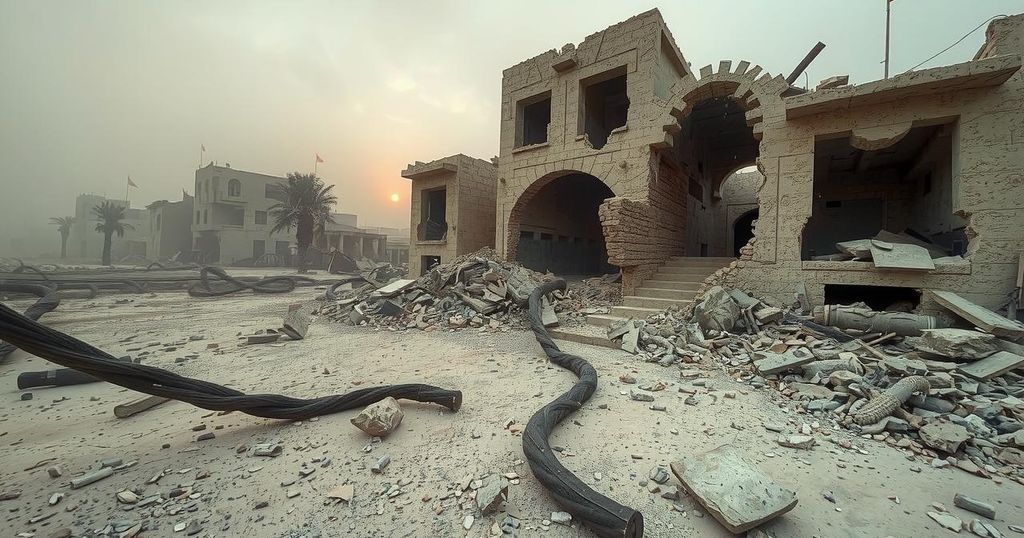The United States is intensifying its focus on Iran amidst heightened threats from President Trump and military posturing in the Middle East. Israel faces multiple threats, including from Hamas and Hezbollah, while assessing the urgency of these challenges. Military operations in Gaza remain measured, with significant implications for troop mobilization and public sentiment in Israel.
The United States has heightened its focus on Iran amidst escalating threats from President Donald Trump and military maneuvers in the Middle East. As Israel assesses various threats, from Hamas in Gaza to Iranian influence, the situation remains complex and urgent. Senior security officials have identified Iran as a significant concern, alongside challenges posed by Hezbollah, Turkey, and the Houthis.
President Trump is intensifying rhetoric against Iran, suggesting that attacks from Yemen will be treated as Iranian-hosted aggressions. He is maintaining pressure on the Houthis despite their ongoing missile attacks on Israel, which complicate the regional stability. There remains uncertainty regarding whether these actions are posturing for negotiation purposes related to Iran’s nuclear program or if they signify the beginning of potential significant military conflict.
American military activities have intensified, notably with the arrival of at least five B-2 stealth bombers at Diego Garcia, an American military base, hinting at a robust operational readiness. The Pentagon has announced extended deployment for the USS Harry S. Truman and the addition of the USS Carl Vinson to the region, indicating a solid coordination with Israel, especially regarding defense systems.
However, ongoing tensions were revealed by reports of a sensitive intelligence leak from Israeli discussions. This exposure has raised concerns regarding the potential impact on intelligence-sharing and military strategies involving strikes in Yemen. The Israel Defense Forces (IDF) continue to conduct operations to maintain security, attacking targets in Syria and dismantling leadership elements of Hezbollah and Hamas.
In Gaza, the IDF’s military campaign has been cautious, aiming to apply pressure for compromise rather than provoke an all-out war. Although the pace of operations is slow, the IDF is gaining territory with minimal casualties. Current strategies do not indicate a large-scale ground offensive, hinting at a gradual approach to military engagement, although future success may necessitate a larger troop mobilization.
IDF spokesperson Brig. Gen. Daniel Hagari has emphasized the need for increased military personnel, stating, “We need more soldiers in the IDF right now—not in a few years. The war is happening now.” His acknowledgment of the current military fatigue and political divisions reflects as concern, especially with some demographics being shielded from service obligations, placing a strain on the IDF’s resources as they navigate through a delicate and evolving conflict landscape.
In summary, the U.S. is notably increasing its military posture toward Iran, paralleling Israel’s strategic assessments of regional threats. The focus on Iran, amidst tensions with various groups, underscores the precarious nature of military and diplomatic undertakings in the region. While the IDF engages cautiously in Gaza, urgent calls for reinforcements highlight the challenges ahead as conflicts continue to escalate.
Original Source: www.ynetnews.com




